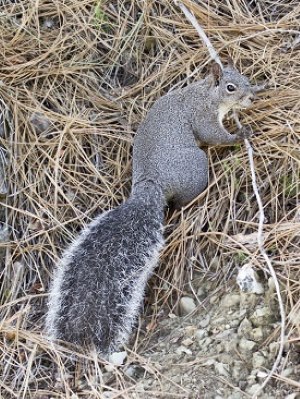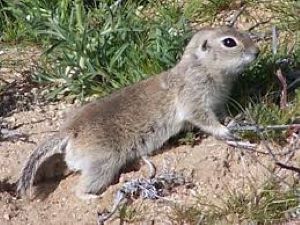California is home to many native species of tree and ground squirrels. They can be found in diverse habitats including urban, residential and rural areas throughout the state. For many people, squirrels may be the most common and easily recognizable local wildlife. Squirrels provide many ecosystem services as nutrient and seed dispersers and are an important part of the natural food chain.
Potential conflicts with squirrels may occur due to property damage if building nests or digging burrows, and human health or safety concerns (e.g. plague, other diseases). A squirrel diet may consist of seeds, plants, eggs, and insects, but can also include pet food, animal feed, or trash. Squirrels typically avoid people unless fed.
Tree Squirrels

There are five species of tree squirrel in California: the native Northern flying squirrel (Glaucomys sabrinus), Douglas tree squirrel (Tamiasciurus douglasii), and Western gray squirrel (Sciurus griseus); and the non-native Eastern gray squirrel (S. carolinensis) and Eastern fox squirrel (S. niger). Tree squirrels, with the exception of flying squirrels, are a game mammal and may be hunted in California.
Ground Squirrels

There are several species of ground squirrel found in California, the most commonly seen species is the California ground squirrel (Otospermophilus beecheyi). Some species, such as the Mojave ground squirrel (Xerospermophilus mohavensis), are threatened or endangered. Ground squirrels are generally social, typically living in colonies, and may share burrows.
Prevent Potential Conflicts